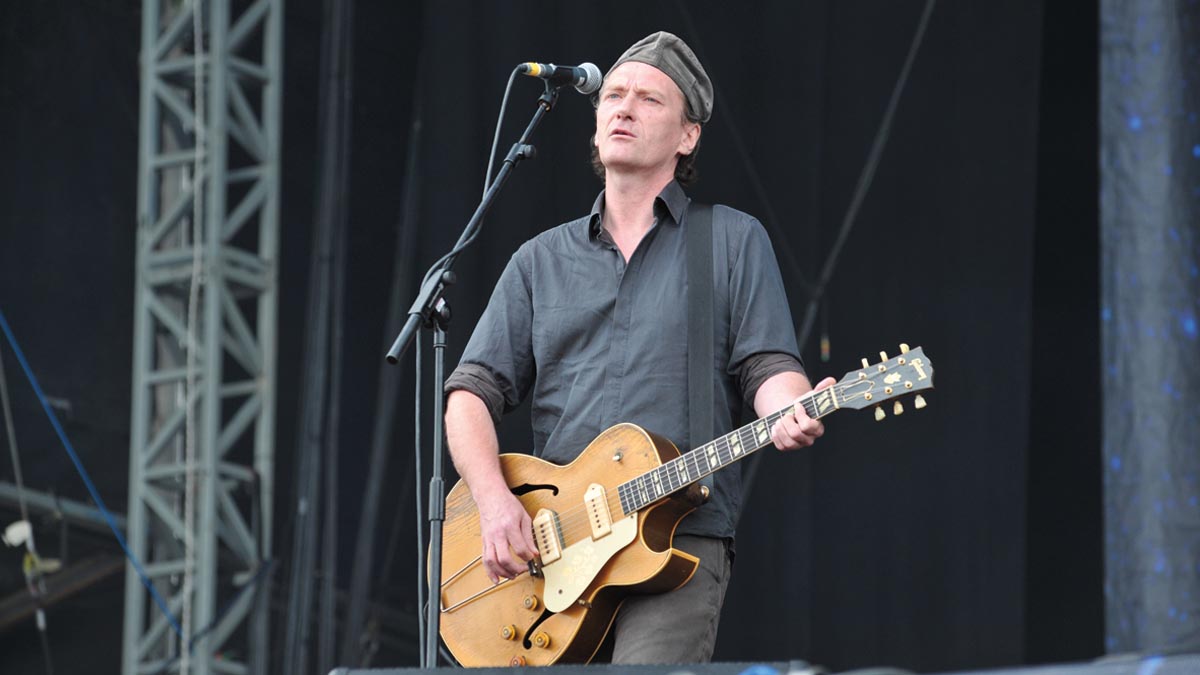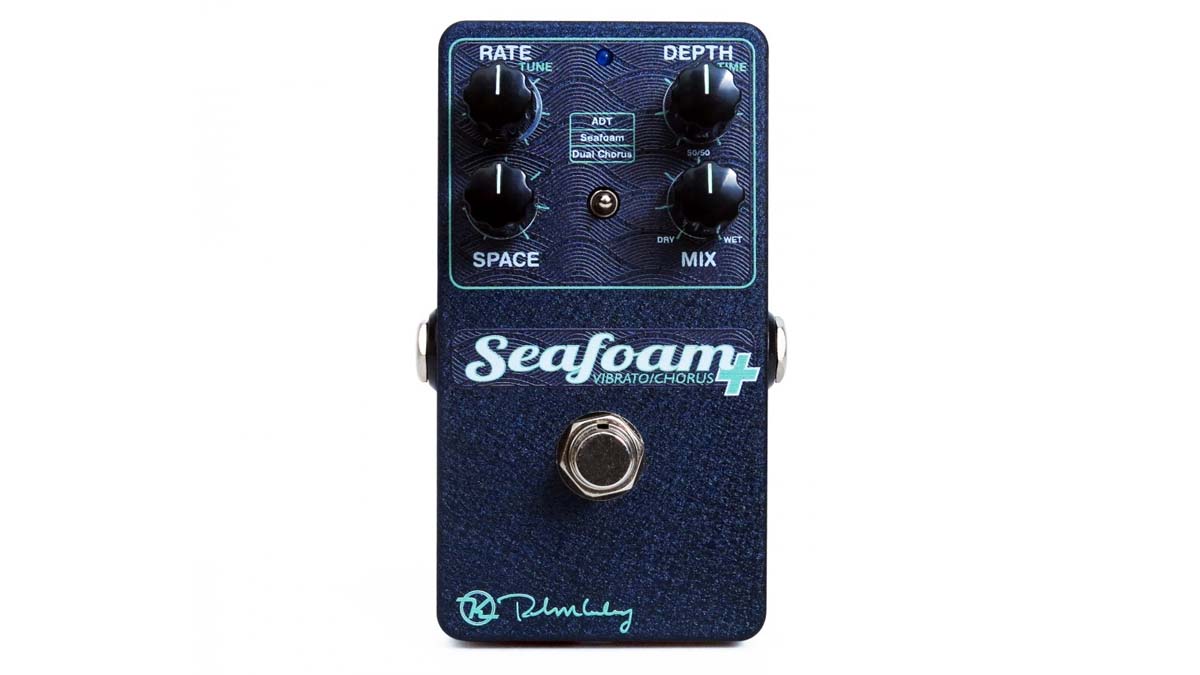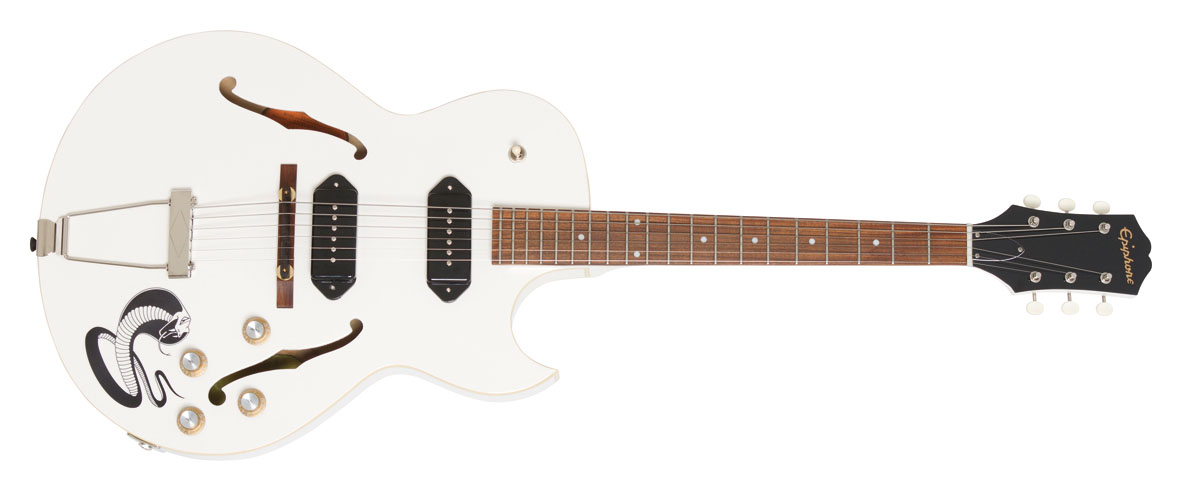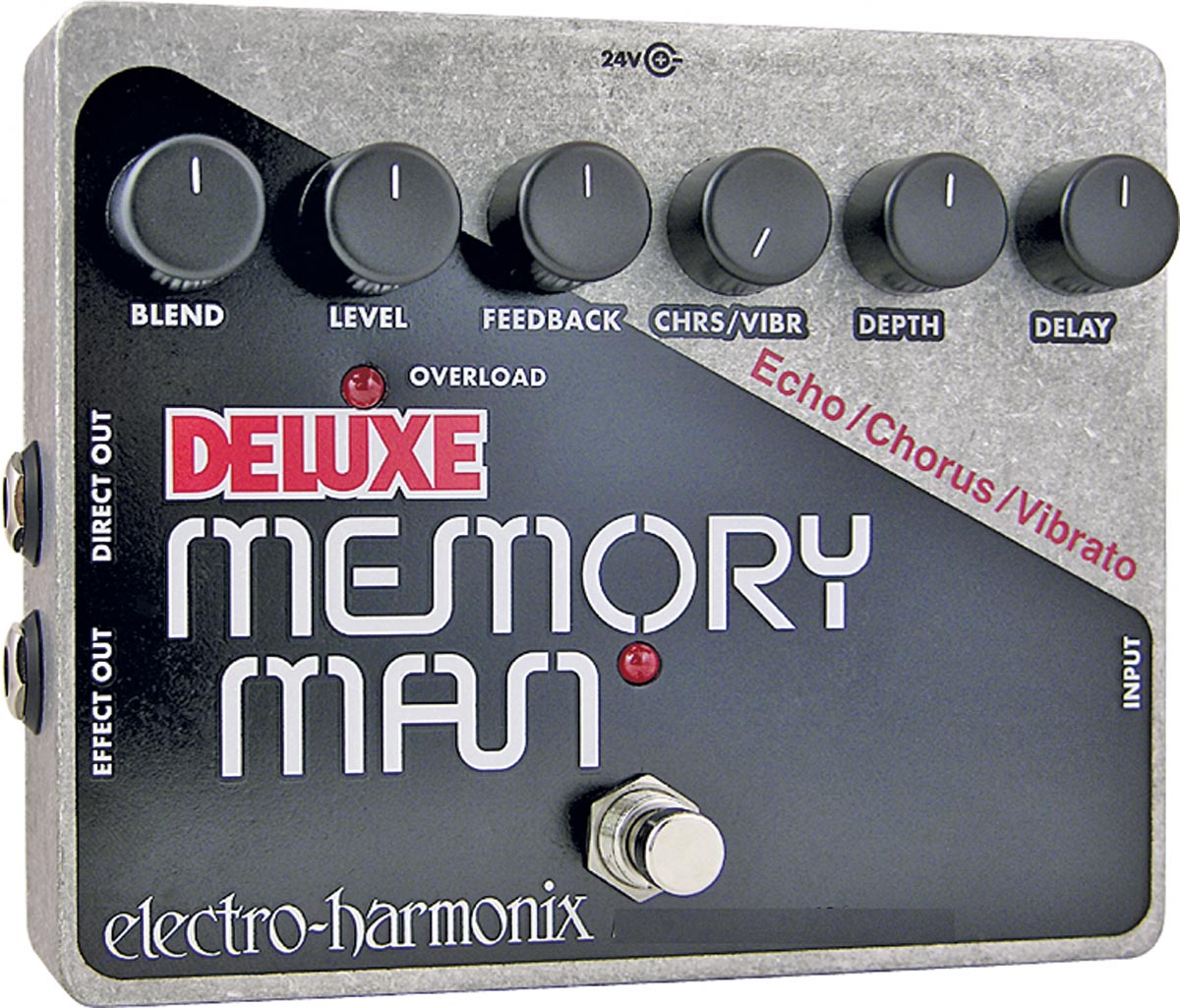The secrets behind Geordie Walker's guitar tone on Killing Joke's Eighties
The Killing Joke guitarist found his sound in a Gibson ES-295 and an ear for lush yet haunting tone

Killing Joke had recorded three studio albums before 1982 when Geordie Walker found the Gibson ES-295 hollowbody electric that became his main guitar.
The ES-295 has played a prominent role on every subsequent recording he’s made, as it delivered exactly the sound he was looking for.
“When you find something that you express yourself through the best - something that is completely your sound - why would you use anything else?” he said in the May 2016 issue of Guitar World.
Geordie uses very heavy strings but tunes down a whole step to DGCFAD to make the string tension more comfortable, with the added benefit of making the tone heavier as well.

While not a copy of Geordie’s PA:CE/Bell Electrolabs ADT units, the Keeley pedal employs similar pitch-shifting and delay processing to generate very distinctive chorus/modulation effects. The amp should be dialed just beyond the onset of overdrive to retain the punch and definition of the strings.
In addition to enhancing the guitar’s resonant twang, the ES-295’s Les Paul wraparound trapeze bridge allows Walker to create subtle vibrato effects by pushing down on the tailpiece to ease string tension, which he certainly does to great effect when it comes to the chorus of Eighties.
Another key to Geordie’s highly distinctive, richly textured tone is his stereo dual-amp setup with chorus/delay units. From Killing Joke’s early days through the mid Nineties, he used a pair of Burman Pro 2000 heads, each driving a custom-made Burman 8x10 speaker cabinet.
Manufactured in Walker’s hometown of Newcastle during the late Seventies and early Eighties, Burman amps were developed by Gregg Burman and also used by Scott Gorham of Thin Lizzy, Allan Holdsworth and some bloke named Eric Clapton.
Get The Pick Newsletter
All the latest guitar news, interviews, lessons, reviews, deals and more, direct to your inbox!
The amps feature an unusual cascaded preamp design with three gain controls, active midrange EQ and robust circuitry such as KT77 tubes and custom transformers.
Geordie plugged his ES-295 directly into an Electro-Harmonix Deluxe Memory Man, which provided slapback echo (here at about 132ms with two repeats) and subtle chorus modulation while also splitting the signal to a pair of PA:CE/Bell Electrolabs ADT units, which stack additional layers of chorus modulation and delay effects to generate a lush, vibrant wall of sound.
Like the ES-295, the ADT units remain mainstays of Geordie’s rig to this day and play an essential role in his highly distinctive signature sound. Ambience comes courtesy of meticulous room miking instead of the amp’s reverb or studio processing.
Get the sound, cheap!

Epiphone George Thorogood “White Fang” ES-125TDC

Electro-Harmonix Deluxe Memory Man

Keeley Seafoam+ Vibrato/Chorus

Orange Rocker 15 1x10 combo
- Epiphone George Thorogood “White Fang” ES-125TDC
- Orange Rocker 15 1x10 combo
- Electro-Harmonix Deluxe Memory Man
- Keeley Seafoam+ Vibrato/Chorus
Original Gear
GUITAR: 1952 Gibson ES-295, all tone and volume controls: 10 (middle pickup setting for main riff; bridge pickup for chorus and solo).
AMPS: Two late-'70s Burman Pro 2000 heads (High Frequency switch: On, Gain 1: 4, Gain 2: 5, Gain 3: 7, Bass: 2.5, Middle: 4.5, Treble: 5, Presence: 4, Reverb: 0); two custom Burman 8x10 speaker cabinets with Celestion G10L-35 speakers.
EFFECTS: late-'70s Electro-Harmonix Deluxe Memory Man (Chorus setting, Level: 2, Blend: 6, Feedback: 6, Delay: 2, Chorus-Vibrato: 4, Echo out and Direct Out both used to split signal to inputs of each ADT unit), two PA:CE/Bell Electrolabs ADT (identical settings on both units – Gain: 2, Mix: 10, Mod: 5, Deviation: 5, Delay: 6, Mixed output).
STRINGS/TUNING: .012 - .062, brand unknown/DGCFAD (low to high).
PICK: unknown, possibly heavy teardrop-shaped.
Chris is the co-author of Eruption - Conversations with Eddie Van Halen. He is a 40-year music industry veteran who started at Boardwalk Entertainment (Joan Jett, Night Ranger) and Roland US before becoming a guitar journalist in 1991. He has interviewed more than 600 artists, written more than 1,400 product reviews and contributed to Jeff Beck’s Beck 01: Hot Rods and Rock & Roll and Eric Clapton’s Six String Stories.
Guitar World Discussion: Who is the most underrated guitar player of all time?
Ozzy Osbourne’s solo band has long been a proving ground for metal’s most outstanding players. From Randy Rhoads to Zakk Wylde, via Brad Gillis and Gus G, here are all the players – and nearly players – in the Osbourne saga












